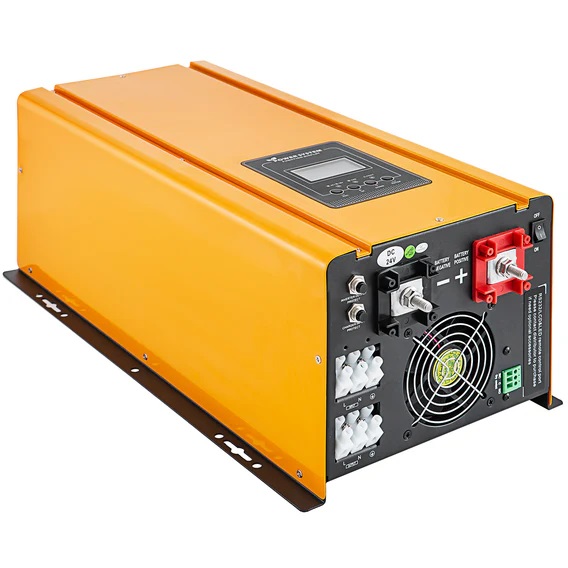A power frequency inverter is a device used to convert direct current (DC) power into alternating current (AC) power at a specific frequency, typically 50 Hz or 60 Hz, depending on the application and geographical location.
- Frequency Output: Power frequency inverters produce AC power at a specific frequency, which is typically the standard power frequency used in the region where they are deployed (e.g., 50 Hz in most of Europe and Asia, and 60 Hz in North America).
- Voltage Output: They provide AC output at the desired voltage level, which could be single-phase or three-phase, depending on the application and requirements.
- Waveform Quality: Modern power frequency inverters aim to produce a sinusoidal AC waveform similar to that provided by the utility grid. This ensures compatibility with various types of electrical loads and minimizes harmonic distortion.
- Efficiency: Power frequency inverters strive for high efficiency in converting DC power to AC power. This helps in minimizing energy losses during the conversion process, making them more environmentally friendly and cost-effective.
- Output Power Range: Inverters come in various power ratings to cater to different applications, from small residential solar systems to large industrial installations.
- Control and Monitoring: Many power frequency inverters feature advanced control and monitoring capabilities, allowing users to adjust output parameters such as frequency, voltage, and power factor. They may also offer remote monitoring and control options for enhanced convenience and performance optimization.
- Protection Features: Inverters typically include built-in protection features to safeguard against overvoltage, overcurrent, short circuits, and overheating, ensuring reliable and safe operation.
- Grid-Interactive Capability: Some power frequency inverters are designed to operate in grid-interactive or grid-tied mode, allowing them to synchronize with the utility grid and feed excess power back into the grid. This feature is commonly utilized in renewable energy systems such as solar photovoltaic (PV) installations.
- Battery Charging Capability: In addition to converting DC power to AC power, certain power frequency inverters incorporate battery charging functionality, enabling them to charge batteries from an external DC power source such as solar panels or wind turbines.
- Application Flexibility: Power frequency inverters find applications in a wide range of sectors, including renewable energy systems, uninterruptible power supplies (UPS), motor drives, and emergency backup power systems, among others. Their versatility makes them essential components in modern electrical and electronic systems.


